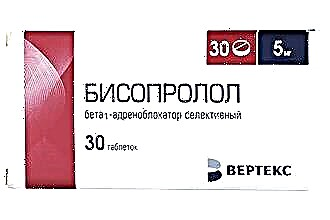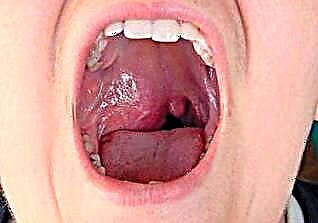Inhalation is an affordable and effective method of treating respiratory diseases. Steam inhalation is recommended for inflammation of the upper respiratory tract, and inhalation with a nebulizer is recommended for inflammation of the lower respiratory tract.
 Steam inhalation can be successfully used at home, in the treatment of acute respiratory infections in adults and children. In particular, this procedure helps to speed up the recovery from the common cold.
Steam inhalation can be successfully used at home, in the treatment of acute respiratory infections in adults and children. In particular, this procedure helps to speed up the recovery from the common cold.
What inhalations can you do with a cold? Steam inhalation can be carried out with the addition of herbal decoctions, essential oils, soda, etc. Warm steam moisturizes the nasopharynx, thinning phlegm, helping to drain mucus and facilitate breathing. In addition, inhalation can have antiseptic, anti-inflammatory, deodorant and other effects, depending on what you decide to add to the inhaler for the common cold.
In this article, we will tell you what to use for inhalations for a cold - what herbs and essential oils are used for inhalation for a cold, how to properly prepare a saline solution for inhalation for a cold, and also talk about the advantages and disadvantages of various inhalation mixtures.
The positive effect of the procedure will be achieved only if the inhalation is carried out correctly, taking into account safety measures.
Steam inhalation rules
Steam inhalation can be carried out using a special inhaler, or without any devices, breathing over an open container with a warm inhalation mixture.
Inhalation using a steam inhaler is highly recommended. You can buy it at any pharmacy, moreover, at a reasonable price.
Using an inhaler increases the effectiveness of the procedure and reduces all kinds of risks.
 Thus, a steam inhaler prevents inhalation of steam too close to the surface of the water. It also prevents steam and solutes from getting on the skin of the face (vapors of herbs and essential oils can cause skin irritation, allergic rashes). In addition, the likelihood of burns as a result of overturning the container with liquid is reduced.
Thus, a steam inhaler prevents inhalation of steam too close to the surface of the water. It also prevents steam and solutes from getting on the skin of the face (vapors of herbs and essential oils can cause skin irritation, allergic rashes). In addition, the likelihood of burns as a result of overturning the container with liquid is reduced.
During the procedure, the person should be calm. Inhalation should not be carried out on an empty stomach, or vice versa, after a heavy snack. It is optimal to start inhalation an hour and a half after eating.
Procedure:
- Pour a warm solution into the inhaler. Its temperature should be about 40-50 C. During the procedure, the child's water temperature should not exceed 40 C.
- Close the device with the lid and attach the special attachment (follow the instructions of the inhaler manufacturer).
- Sit in a comfortable position, place the inhaler next to the table. He must stand securely and not too close to the edge of the table. If inhalation is given to a child, take him in your arms. Hold the inhaler with your hand and control the movements of the child so that he does not overturn the device.
- Place the attachment on your face and inhale through your nose. Hold your breath for a couple of seconds and exhale. If the procedure does not cause rejection (dizziness, nausea, etc.), continue to breathe measuredly and calmly. Do not take too harsh or deep breaths. The recommended duration of the procedure for an adult is from 5 to 15 minutes, for a child - up to 5 minutes.
- After the procedure, you should not drink, eat, talk, smoke, etc. about half an hour. It is also not recommended to go outside.
Any medication for an inhaler for a cold can only be used after consulting a doctor. You should also not experiment with inhalation with a nebulizer on your own. Remember that substances from a nebulizer reach your lungs. Ingestion of essential oils, herbs, etc. in the alveoli can cause pneumonia.
Contraindications to steam inhalation:
- increased body temperature (above 37.5 C);
- tendency to nosebleeds, the presence of wounds in the nasal cavity;
- purulent nasal discharge, purulent tonsillitis, purulent sinusitis;
- for children under 5 years of age, steam inhalation is carried out only as directed by a pediatrician;
- with caution, they are prescribed to pregnant and lactating women.
Saline is a universal remedy for a cold
 Inhalation with saline for a cold is one of the safest methods of treatment. The saline solution has no contraindications, it is impossible to overdose it. Inhalation with saline is prescribed even for infants, pregnant and lactating women.
Inhalation with saline for a cold is one of the safest methods of treatment. The saline solution has no contraindications, it is impossible to overdose it. Inhalation with saline is prescribed even for infants, pregnant and lactating women.
What is saline solution? Physiological solution - 0.9% aqueous solution of sodium chloride (NaCl). A feature of this simple substance is that its osmotic pressure is equal to the osmotic pressure of the blood. Thanks to this, saline can even be administered intravenously, which is absolutely safe, and is widely used in medicine, for example, for dehydration, intoxication.
In the treatment of acute respiratory infections, saline is also widely used. So, with him do inhalation, rinsing the nasopharynx, nasal instillation.
Saline does not disrupt the functioning of mucosal cells, so this type of treatment does not cause addiction and side effects.
What is the reason for the therapeutic effect of inhalations with saline? This procedure works as follows:
- the viscosity of mucus decreases due to its saturation with water vapor;
- the salt in the saline solution "pulls" water on itself, and the cells of the mucous membrane begin to produce phlegm more actively;
- due to the above effects, the mucus becomes larger, but it is much thinner, and therefore it comes out more easily;
- The mild warming effect improves blood circulation in the nasal cavity, thereby reducing swelling, which is the main cause of nasal congestion.
Saline inhalation can be used as an independent method of treatment, and in combination with other procedures.
Saline can be the basis for inhalation with the addition of essential oils. When using a nebulizer, drugs for inhalation are also dissolved in saline, but with a cold, this method of treatment is ineffective. The vapor droplets generated by the nebulizer are very small and condense in the lower airways (alveoli of the lungs). In the nasopharynx, the vapor of the nebulizer practically does not settle.
A saline solution with a sodium chloride concentration close to 0.9% can be prepared at home. To do this, dissolve a teaspoon of salt in a liter of clean boiled water (or to be more precise - 9 g). This solution will work in the same way as commercial saline.
The advantage of a saline solution from a pharmacy is its sterility, absence of impurities and strict compliance with 0.9% salt concentration.
Soda - effective and affordable
What else to do inhalations with a cold at home? Common baking soda used in cooking can help. This remedy is used for inhalation from a cold, as well as from a cough with difficult sputum discharge.
Soda is actively used in the treatment of acute respiratory infections due to its slightly alkaline properties.
 How does an aqueous solution of soda work:
How does an aqueous solution of soda work:
- alkali reduces the acidity of the mucous membrane, thereby inhibiting the vital activity of bacteria;
- soda - a mucolytic that reduces the viscosity of mucus and promotes its discharge;
- mucus in the nasopharynx gets wet and comes out more easily;
- nasal breathing is facilitated, cough is reduced.
To carry out soda inhalation, add a teaspoon of soda to a liter of warm boiled water and stir until it is completely dissolved. The procedure should be carried out at a liquid temperature of 40-55 C. Duration - no more than 10 minutes.
As an alternative to an aqueous solution of soda, you can use alkaline mineral waters - Borzhomi, Essentuki, Polyana Kvasova, Svalyava.
Essential oils and their action
Essential oils are now actively used not only by traditional healers, but also by professional doctors. The action of essential oils is due to the presence of phytoncides, terpenes, alcohols, terpenoids and other biologically active substances.
Thanks to this, essential oils can have the following effects:
- antiseptic (inhibit the vital activity of bacteria, fungi and viruses);
- mucolytic;
- anti-inflammatory;
- pain reliever;
- reduction of edema;
- removal of psychological stress, relaxation, or vice versa - activation of the processes of the central nervous system, nervous excitement (depending on the selected oil).
It is worth noting that essential oils can also have a negative effect on the human body. Do not use undiluted oil (for example, to lubricate the wings of the nose), and also exceed the recommended dosage for inhalation.
Essential oils containing ketones should be used with caution. Ketones, along with strong anti-inflammatory and antiseptic effects, exhibit pronounced toxic effects. They reduce blood clotting, impair brain function, and impair liver function. They especially negatively affect the developing organism, in particular, the fetus during gestation. Essential oils that are high in ketones include:
- lavender;
- mint mint;
- wormwood oil;
- camphor;
- sage oil.
Pregnant women should be especially careful when choosing an essential oil. Basil, cedar, cinnamon, cypress, juniper, nightshade oils, as well as all oils with a high ketone content are contraindicated during pregnancy.
The minimum content of ketones is typical for oils such as:
- eucalyptus;
- peppermint;
- cedar;
- rosemary;
- tea tree.
It is these oils that we recommend using for inhalation. In particular, eucalyptus oil has a pronounced therapeutic effect for a cold.
For inhalation with eucalyptus oil, 2-3 drops of oil should be dropped into a container with warm water. Inhale the vapor slowly, without taking too deep breaths. The procedure is carried out 2-3 times a day.
Inhalation with other essential oils is carried out in a similar way.
Decoctions and infusions of medicinal herbs
Many popular recipes for inhalations with a cold involve the use of medicinal herbs. Herbs for inhalation are especially effective for the common cold, such as:
- oregano;
- thyme;
- coltsfoot;
- raspberries (leaves);
- calendula;
- pine buds;
- eucalyptus.
You can use only one plant, or you can prepare a mixture of 2-3 herbs.
To prepare a decoction, take a liter of clean water and bring to a boil. Throw a tablespoon of dry raw materials into boiling water. If you are combining herbs, reduce the amount of ingredients so that the total amount of plant materials does not exceed a tablespoon. Reduce heat to low and simmer for 10 minutes. After that, bring the volume of liquid to 1 liter (when boiling, the volume of water will decrease).
To prepare the infusion, simply pour boiling water over the dry raw materials and leave for 10 minutes.
The prepared solution is poured into a steam inhaler and the procedure is started when the temperature of the liquid drops to 50-40 degrees.
For infants and pregnant women, inhalation with medicinal herbs can be carried out only after consulting a doctor. Certain herbs can negatively affect the course of pregnancy.
For children, hypoallergenic herbs are usually used - chamomile, thyme, lavender.
Dry inhalation
Dry inhalation is a kind of medical procedure. They differ from steam ones in that they do not imply dissolution of medicinal components in a liquid. In this case, only volatile substances - phytoncides, essential oils, etc., enter the respiratory tract.
What can you breathe with a cold? Dry garlic inhalations give a good effect. For the procedure, you will need a head of garlic and gauze. The garlic is crushed by pressing with a spoon or in another convenient way so that the juice is released from it. The crushed head is wrapped in cheesecloth and the vapors are inhaled. Garlic contains phytoncides - natural antiviral and antibacterial substances. This method is especially good for the prevention of ARVI.
Similarly, you can breathe onions with a cold. By the way, during epidemics, you can decompose chopped onions and garlic in the house to disinfect the air. Alternatively, citrus fruits can be used, which have a more pleasant aroma, but a similar effect.
It is recommended to use this procedure as an adjunct therapy, along with steam inhalation and prescribed treatment.



